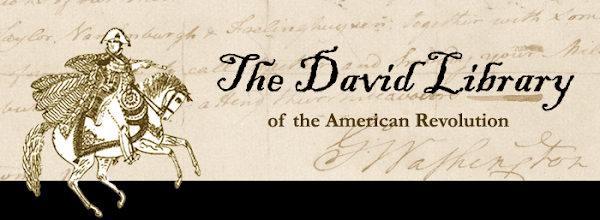When a major political party chooses Philadelphia as the setting for its national convention, it's no surprise that the speeches from the convention stage include lofty references to the Founding Fathers, the Declaration of Independence and birth of American democracy.
From the stage of Philadelphia's Wells Fargo Center where the Democratic National Convention was held this week, there were plenty of references to America's founding era and the events that took place in Philadelphia during that period. But we noted that one of the most interesting historical references made by any of the convention speakers didn't come from a politician or a historian or a teacher. It came from Academy Award winning actress Meryl Streep.
During her speech at the first major party convention to nominate a woman to be President of the United States, Streep asked, "What does it take to be the first female anything?"
She went on to tell the story of Deborah Sampson, "the first woman to take a bullet for our country."
Streep said that Sampson "served, disguised as a man, in George Washington’s Continental Army. She fought to defend a document that didn’t fully defend her. 'All men are created equal,' it read. No mention of women. When she took a blast in battle to her leg, she was afraid to reveal her secret. So she took a pen knife, she dug out the musket ball, and she sewed herself back up again."
Leave it to an actress to recognize a dramatic story worthy of being retold!
According to resources you can find at the David Library of the American Revolution, Deborah Sampson (1760-1827) did indeed serve in the Continental Army disguised as a man. Calling herself "Robert Shurtleff," she served in the 4th Massachusetts Regiment. Sampson was wounded in 1782, and was honorably discharged by General Henry Knox in 1783. In 1804, Paul Revere petitioned Congress for funding to assist her and her family, and as a result, Sampson received a pension from the state of Massachusetts. She later applied for and received a Federal pension under the Congressional legislation dated March 1888.
If you are interested in learning more about Deborah Sampson and other women who participated in the American Revolution, you will find plenty of material at the David Library. Our Sol Feinstone Collection of original manuscripts even includes an officer's report on discovery that a "boy" in his regiment was actually a young woman. In item number 82 in the Collection (Barton, William. Elizabethtown, [N. J.], 17 Nov. 1778.), it is reported that she accidentally gave herself away when, upon being dismissed by the officer, she curtsied.
Here are some sources on Deborah Sampson:
Full Length Books
1. Freeman, Lucy and Alma Halbert Bond
America’s First Woman Warrior: The Courage of
Deborah Sampson (New
York: Paragon House, 1992). Call Number: 2991
2.
Mann, Herman
The Female Review: Life of Deborah
Sampson, the female soldier in the War
of Revolution
(NewYork: Anos Press, 1972). Call Number: 1053
3. Young, Alfred F.
Masquerade:
The Life and Times of Deborah Sampson, Continental Soldier (New York:
Alfred A. Knopf, 2004). Call Number:
5768
Sources that includes the history of Deborah
Sampson:
1. Bohrer, Melissa Lukeman.
Glory, Passion, and Principle: The
Story of Eight Remarkable Women at the Core of the American Revolution (New York: Atria Books, 2003). Call
Number: 5781
2.
Laska, Vera O.,
“Remember the Ladies”: Outstanding
Women of the American Revolution (Boston: Commonwealth of Massachusetts Bicentennial
Commission, 1976),Call Number: 1083p
Our thanks to Alyssa Brophy, summer intern at the David Library from Kutztown University for her assistance in preparing this post.


